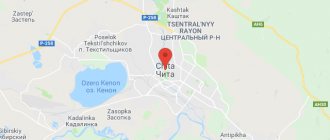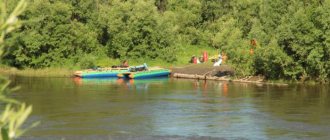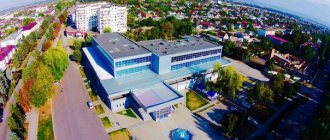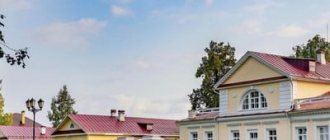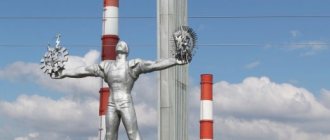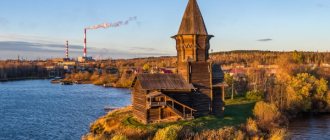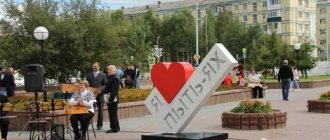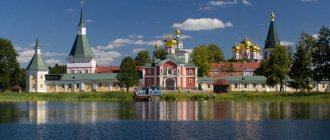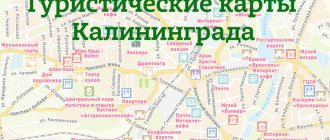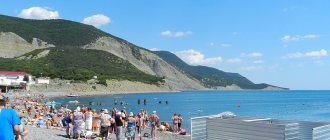Izhevsk is the recognized capital of Russian small arms. The city became famous thanks to the master inventor Mikhail Kalashnikov. The models of machines he created are considered the best in the world. Military equipment and weapons have become the hallmark of the city.
Izhevsk enterprises also produce high-quality steel, automobile and motorcycle equipment, radio components and communication systems. The city is one of the largest industrial centers in Russia. In addition, it serves as the capital of the Udmurt Republic.
Where is Izhevsk?
The city occupies a favorable position in the center of the Udmurt territory. In physical and geographical terms, its location is confined to the Volga-Kama interfluve. The settlement is located along the banks of the Izh River (a tributary of the Kama) and the Izhevsk Pond (an artificial reservoir created in the 18th century). Urban buildings occupy an area of 315.15 km².
Izhevsk has the status of an urban district and is part of the system of agglomerations of the Ural-Volga region. Its distance from other important administrative centers is:
- 295 km – to Perm (Perm region);
- 340 km - to Ufa (Republic of Bashkortostan);
- 390 km – to Kazan (Republic of Tatarstan).
Izhevsk is separated from the Russian capital by 1.13 thousand km.
Izhevsk is the capital of Udmurtia - the Udmurt Republic. The population of the city is 646,468 people. (2021), the population of the Izhevsk agglomeration is up to 1 million people. The city is located 1198 km from Moscow in the MSC+1 time zone. Distances between Izhevsk and the largest cities of the Volga Federal District: Saratov - 1026 km, Nizhny Novgorod - 786 km, Samara - 561 km, Ulyanovsk - 576 km, Kirov - 426 km, Kazan - 390 km, Ufa - 341 km, Perm - 279 km , Naberezhnye Chelny - 200 km.
The name of the city comes from the name of the Izh River, on the banks of which the Izhevsk ironworks and workers' settlement were built in 1760. Similar names are found among the Udmurts and Komi-Permyaks - the rivers Varyzh, Izhma, Pizhma, the villages of Izh and Izhevskoye. The settlement was named in different years - Izhevsk plant (1760-1918), Izhevsk (1918-1984, and also from 1987 to the present), Ustinov (1984-1987).
Izhevsk is located in the eastern part of the East European Plain, in the interfluve of the Vyatka and Kama, on the non-navigable Izh River, a right tributary of the Kama River. The main reservoir of the city was created in the 2nd half. XVIII century Izhevsky pond (water area - 2200 hectares). The territory is a hilly plain on three hills with a general slope to the south. The names behind the hills were established: Zareka, Gora and Vostochny Settlement. The most elevated part of Izhevsk is the interfluve of the Karlutka and Chemoshurka rivers, where the Eastern village is located (208 m above sea level). The southern part of the city is low-lying and swampy in places. The lowest places are the valleys of the Izha and Pozimi rivers, which are flooded during the flood period.
History of the Izhevsk Arms Plant (now the Kalashnikov Concern)
In Russia, even during the reign of Peter I, attempts were made to give the production of domestic weapons priority state importance. And these attempts were not unsuccessful. The issue of building state-owned arms factories in Russia arose especially acutely at the beginning of the 19th century.
The growing danger of an armed conflict with Napoleonic France required a significant increase in the size of the Russian army. The need to organize the production of our own weapons also became increasingly obvious: in war conditions, foreign suppliers could find themselves on the enemy’s side.
In 1800, Emperor Paul I ordered the establishment on the river. Kame weapons factory for the production of 100 thousand pieces of bladed weapons and firearms. The selection of a site for the construction of the plant lasted several years. Among others, the mining chief of the Goroblagodat, Perm, Kama and theological factories, Oberberghauptman 4th class A.F. Deryabin, presented his thoughts on the most successful and profitable location for the treasury for weapons production. He convincingly substantiated the advantages of creating weapons factories in mining iron production.
The project of A.F. Deryabin, despite the obvious reluctance of the military department to cede the construction of an arms factory to the mining department, received approval, and by the highest personal decree of Emperor Alexander I of February 20, 1807, A.F. Deryabin was entrusted with the construction of a new arms factory on the river. Kame.
Students of the weapons school at the monument to the founder of the Izhevsk arms factory A.F. Deryabin. Photo from the beginning of the 20th century.
With the grand opening of the Armory Office on June 10, 1807, the history of the Izhevsk Arms Factory began.
To establish the arms business, A.F. Deryabin transferred several hundred artisans from the mining factories under his jurisdiction, in return sending some of the recruits who arrived by government decree to the Izhevsk plant as laborers. Auxiliary factory work (deforestation, coal burning, etc.) was assigned to indispensable workers - assigned peasants from nearby villages and hamlets.
There was a shortage of our own specialists. So, for training local workers in weapons and tool skills in 1807-1808. More than 150 foreign craftsmen, mainly Swedes and Danes, were hired at the plant.
The Kalashnikov Concern, formerly Izhevsk Machine-Building, traces its foundation to weapons production at the Izhevsk Ironworks, which began in 1807. This determined the direction of development of the future city and region. Over the past years, Izhevsk weapons have gained worldwide fame
With the arrival of new people at the plant, problems arose with accommodation. Only 4,866 recruits were sent, and foreign masters arrived with their families. And although A.F. Deryabin distributed some of the recruits to other mining plants, and sent foreign craftsmen to the Votkinsk plant, there was a catastrophic shortage of housing.
Along with individual buildings, houses for factory employees and barracks for soldiers were erected at the expense of the treasury. For the first time, both the plant and the village were built according to a single plan, the author of which was the outstanding architect S. E. Dudin. His master plan for the “future city of Izh”, highly approved by Emperor Alexander I, determined the principle of Izhevsk urban planning for many years.
Among the first builders of the Izhevsk plant there were many Old Believers, from the 1840s. There was a prayer house in the village. The Old Believer Church was built in 1909 (demolished in 1936).
Izhevsk arms factory. Engraving by M. Rashevsky
By the end of 1807, Izhevsk gunsmiths had produced seven 7-line muzzle-loading flintlock rifles, five pistols and six soldiers' cutlasses. On October 28, 1808, the Izhevsk arms and ironworks factories were transferred from the mining department to the military department. At the same time, a number of Deryabinsk initiatives to improve weapons production were considered unprofitable, including the tool workshop.
Only in 1897 was the feasibility of this idea of Deryabin recognized, and a tool workshop was reopened at the plant. Despite the short-lived leadership of the Izhevsk plant, A.F. Deryabin managed to lay a solid foundation for the future glory of Izhevsk weapons. On the day of the factory's centenary celebration in 1907, gunsmiths erected a monument to the outstanding engineer and scientist near the main building of the arms factory, which was preserved even during the years of the wholesale destruction of pre-revolutionary monuments by the Soviet government.
Well-organized weapons production and the pace of work set by the founder of the plant contributed to a sharp increase in production output. Thus, on the eve of the Patriotic War of 1812, the plant produced 1,822 guns, in 1812 - 5,877, in 1814 - 10,666 guns.
The constant modernization of handguns, which took place in European countries and America, required the Russian military industry to switch to the production of improved models. Since 1845, the plant was rebuilt to produce more advanced smooth-bore 7-line shotguns with a percussion lock, loaded from the muzzle.
Main building of the Izhevsk arms factory
During the Crimean War 1853-1856. Izhevsk gunsmiths were the first to begin manufacturing 6-line rifled percussion rifles loaded from the muzzle of a gun. State-owned arms factories, quite naturally, attracted close attention from the imperial court. Were awarded.
The first royal person to visit the Izhevsk plant in October 1824 was Emperor Alexander I.
In May 1837, during a trip to Russia, Tsarevich Alexander Nikolaevich visited the plant, and in June 1887, Grand Dukes Feldmaster General Mikhail Nikolaevich and his son Sergei Mikhailovich visited the plant. During the visit, all the “highest persons” showed great interest in the production process and the products produced by the plant and invariably remained “very pleased with what they saw.”
Recognition of the high skill of Izhevsk gunsmiths was the awarding of especially skilled craftsmen with green caftans by personal decree of the emperor.
“Caftan workers” enjoyed respect and unquestioned authority among gunsmiths and had considerable privileges. “For the production of high-quality guns” the Izhevsk Arms Plant has repeatedly received the highest awards at Russian and international exhibitions.
On October 25, 1865, the Izhevsk arms and ironworks plants were handed over to rental and commercial management.
At this time, armies in Europe began to be re-equipped with guns loaded from the treasury. The search for the most suitable weapon for arming the Russian army forced the Izhevsk Arms Factory to constantly develop new types of guns loaded from the treasury, such as the Terry-Norman gun (in 1866), Karle (in 1867), Krnka (in 1868 .), Berdan No. 1 (in 1870). The last system that the government settled on in 1870 was the Berdan rifle No. 2, the production of which began at the Izhevsk arms factory in 1874.
The barrel steel required for the production of Berdan guns was purchased abroad and was very expensive. To conduct the “steel business,” the Main Artillery Directorate in 1871 entered into a contract with Captain P. A. Bilderling for the rental and commercial management of an ironworks.
The steel melting experiments he conducted gave positive results. On December 31, 1872, the Izhevsk steel plant began operations.
In 1884, the Izhevsk factories were again transferred to state management and received the name Izhevsk Arms and Steel Factories.
The uneven loading of the plant with orders for the supply of weapons - an increase in wartime and a decrease in peacetime - contributed to the decision in 1885 to allow the acceptance of orders for the production of hunting weapons from private individuals. The Izhevsk plant was the only state-owned plant that produced the so-called “Sibirkas” - small-caliber hunting ramrod rifles.
In the workshops of the Izhevsk arms factory
With the outbreak of the First World War, the production of hunting weapons was stopped. Events forced the Russian army to replace the Berdanka with a more advanced three-line Mosin rifle, for which a reconstruction of weapons production was carried out in a short time.
In addition to rifles, Izhevsk factories produced cartridges, grenades, shells for field howitzers, machine gun and artillery parts.
During the Civil War, a fierce struggle unfolded for the control of the Izhevsk plant.
Neither the whites nor the reds could do without weapons, and the plant was repeatedly transferred from one to the other.
With the final establishment of Soviet power in the country, the restoration of weapons production destroyed by the war began. At the Izhevsk plant, along with the development of new types of military weapons, the production of hunting rifles was launched.
During the Great Patriotic War, the plant produced as many small arms as in the 92 pre-war years combined. 20 types of military equipment were produced here. In total, during the war years, the plant produced 11 million 145 thousand rifles and carbines, more than 15 thousand aircraft guns, almost 132 thousand anti-tank rifles
During the Great Patriotic War, the Izhevsk Machine-Building Plant, into which the Izhevsk Arms and Steel Plants were renamed in 1937, demonstrated rapid growth in production.
No defense enterprise in the world has reached such a scale. More than 11 million rifles and carbines alone were produced.
In total, the plant produced 20 types of military equipment. The labor feat of Izhevsk gunsmiths was highly appreciated by the government - in 1942 the plant was awarded the Order of Lenin, in 1944 - the Order of the Red Star.
The post-war period in the history of the Izhevsk Machine-Building Plant is, first of all, associated with the launch in 1949 of mass production of the Kalashnikov AK-47 assault rifle, which became the most widespread model of small arms in the entire world history.
It is difficult to overestimate the contribution of Izhevsk craftsmen to increasing the country's defense capability. More than 200 years have passed since the founding of the Izhevsk Arms Factory, a long way has been traveled - from flintlocks to modern automatic weapons. Today, some of the historical factory buildings in Izhevsk are planned to be repurposed according to modern designs.
Economy and industry in modern Izhevsk
The largest enterprises in the city are Concern Kalashnikov, Izhevsk Mechanical, Izhneftemash, Reducer, Izhevsk Automobile, IEMZ Kupol, Izhevsk Radio and PJSC IzhStal. The economic situation in Izhevsk is generally positive in the areas of “Production of vehicles and equipment”, “Production of machinery and equipment”, “Production of electrical equipment employing about a third of the average number of employees of Izhevsk organizations.
Among the extractive industry enterprises, Udmurtneft (geological exploration, development and operation of hydrocarbon deposits), Udmurttorf (peat industry), Belkamneft (oil production), and Udmurtgeology (geological exploration and oil production) stand out. In addition, large and medium-sized enterprises include the Izhevsk Plastics Plant, a ceramic materials plant, a reinforced concrete products plant, etc.
Since 2015, the LADA Vesta sedan has been produced at the production site of JSC AVTOVAZ - LADA Izhevsk. In 2022, Izhevsk was awarded the title of City of Labor Valor.
The first railway connecting Izhevsk with Agryz was built in 1916, electrified in 1990. During the first five-year plan, the Izhevsk-Uva road was built.
Izhevsk is the center of the Izhevsk branch of the Gorky Railway. The traction part of the Izhevsky station serves trains in directions to Uva, Balezino, Votkinsk and Naberezhnye Chelny, the electric locomotive part - to Kazan and Yekaterinburg. In addition to the Izhevsk station, there are two railway stations in the city - “in the industrial areas of the city. Since 1993, it has operated from Izhevsk to Moscow.
The main suburban and intercity transport in Izhevsk is the bus. There are about 40 year-round suburban bus routes and about 30 more summer-seasonal, as well as bus routes to all regional centers of Udmurtia and large cities of neighboring regions and republics.
In addition, Izhevsk is connected by bus services to the cities of Kazan, Ufa, Perm, Yekaterinburg, Orenburg, Chelyabinsk, Samara, Cheboksary and other cities of Russia. The city has a bus station and a bus station: the Central Bus Station and the Southern Bus Station.
There is an airport of the same name in Izhevsk (near the village of Zavyalovo). Izhevsk was included in the list of cities participating in the regional aviation development program. In addition, near the village of Pirogovo there is an airfield with a dirt runway for small planes and helicopters (the Izhevsk Aero Club is based here).
In the summer, intra-city river buses operate on the Izhevsky Pond along the route “Izhevsk Pier - Volozhka”. Motor ships of the "Moskva" and "Moskvich" types are operated. The main city piers are at the pond dam, Solovyovskie Dachas and Yurovsky Cape.
ADDENDUM TO THE ARTICLE
From the conclusion of the mining chief of the Goroblagodat, Perm, Kama, and theological factories, Oberberghauptman A.F. Deryabin, to the Ministry of Finance on the feasibility of building an arms factory near the river. Kama at the ironworks on December 4, 1806
Since the reason for this opinion is the current shortage of weapons, the plan for setting up a new weapons factory must be considered from this point of view.
Benefits of the proposed arms factory near the river. The kamas have already been sufficiently clarified and proven before, and there is no need to repeat these proofs again.
The rapid establishment of the plant according to the plan that was previously assumed cannot take place. No matter what sums are given for this arrangement, the plant cannot be put into operation before two years. But there are means to achieve this goal, if not more, then no less consistent with the essence of the matter and, in any case, more useful than the previous plan.
These means consist in establishing one or two artels of all weapons workshops at each state-owned iron plant. The benefits from this are as follows:
1. Dams and various other institutions and buildings generally related to factory operations of any kind are already there ready-made;
2. To set up factories and weapons-making machines, most of the craftsmen and workers are also ready and at a reasonable price;
3. The materials needed for the construction of mining factories will either be taken from their reserves, or prepared by the same workers, or purchased at very reasonable prices, because the quantity of them in one factory for the establishment of an establishment for one or two artels is small, instead that for a whole huge plant in one place, procuring them will create great difficulties, and prices will rise, and it will be impossible to procure them in a short time;
4. For the above three reasons, the establishment of these institutions will not only not have any difficulties and can be completed in a short time, but will also cost incomparably less than any new plant;
5. The management of these establishments in common with mining factories will cost almost nothing, instead of a special plant requiring great sums of money, as evidenced by the Tula plant; […]I
7. Weapon craftsmanship will spread to different places, and the craftsmen at these factories, not only those who will belong to the weapons workshop, but almost all those who belong to the metalworking and forging workshops of the mining plant, will be engaged in this business. This circumstance gives the government the means, if necessary, to suddenly increase the supply of weapons to a very large number. But in an arms factory, especially a separately established one, only the most insignificant amount can be produced beyond the regular number;
When the arsenals are filled with weapons (which sooner or later should be), then the government at a separate weapons factory should provide maintenance to the people in the same way as the army, although in peacetime there is no need for all this quantity. This will generate new unnecessary expenses.
But the artels of weapons workshops at mining factories will not require this content. At such a time they will be busy with other work, more or less related to their craft, and will not forget their skill, as long as the management of these factories remains on a commercial basis, as Gascoin managed the Olonets factories until now and is partly established now by the Gorny project provisions. […]II
All of the above reasons apply only to the demonstration of the benefits of establishing a weapons business at mining factories against a separate weapons factory. As for the benefits that were supposed to come from the arms factory near the river. Kama, then it not only remains the same, but increases even more. […]III.
Oberberghauptman A.F. Deryabin.
State institution "Central State Archives of the Udmurt Republic" (State Institution "CSA UR"), f. 4, op. 1, d. 8, l. 18-21 rev.
Report from the commander of the Izhevsk arms factory Neratov to the inspector of arms factories Khrapovitsky on the visit of the Izhevsk arms factory by Tsarevich Alexander Nikolaevich
May 29, 1837
To Your Excellency, as a result of your commands of April 23 and 27 last No. [No.] 661 and 683, I respectfully have the honor to inform that His Imperial Highness the Heir Sovereign, the Tsarevich, was pleased to visit the local plant on May 21 at 10 ½ o'clock in the evening.
The next day at 7 o'clock in the morning, His Highness deigned to receive the officials I had introduced and then deigned to go to the factory, where, at the entrance, he deigned to receive bread and salt from the society of gunsmiths. In the barrel-making room, His Highness deigned to forge 2 barrels and in the bayonet-forging room, 2 bayonets, with a deliberately prepared hammer that I presented on a steel plate.
Many machines received the attention of this distinguished visitor, especially the stock machines prepared for testing by mechanic Plate, about which His Highness deigned to say that they would be very useful for the plant. Upon completion of the factory inspection. His Highness went to the arsenal, and from there to the hospital.
While inspecting the arsenal, I had the good fortune to report: wouldn’t it be appropriate to order up to 150 guns to be disassembled and then assembled after mixing the parts, but His Highness deigned to select 11 guns himself and give them for disassembly, and awarded him with a flattering review “that art is visible on one gun” .
All these 11 guns came together so well that there was not the slightest difference in anything, which His Highness was very pleased with.
During a visit to the hospital, despite the dilapidation of the building, he deigned to say that he was pleased with the cleanliness and order. Having finished his tour of the hospital, His Highness deigned to return to the apartment and, at the end of the 12th hour, set off on his journey. Moreover, I deigned to give 1,000 rubles to the gunsmiths and other servants, scheduling the distribution of the same at my discretion.
The plant commander is Lieutenant General Neratov.
State Institution "TsGA UR", f. 4, op. 1, d. 301, l. 94-95.
From the order of the Deputy People's Commissar of Armaments of the USSR V. Ryabikov on the production of rifles and carbines at Factory No. 74 in Izhevsk on September 23, 1941.
In pursuance of Resolution of the State Defense Committee No. 696 of September 20, 1941 on increasing the production of rifles at the 74th plant to 12 thousand units per day and organizing the production of rifles at the 54th plant IV to 2,000 pieces [uki] per day I order: §1. 1. To the director of plant No. 74, T. Ivanov:
a) Ensure the production of rifles of the 1891/30 model and carbines of the 1938 model in the amount of 250 thousand units in November 1941, 500 thousand in December 1941, 320 thousand in January 1942. , 340 thousand - in February and, starting in March 1942, 360 thousand units per month;
b) To manufacture, in cooperation with plant No. 74, before January 1, 1942, 6 barrel-drawing machines of type 4m26, using a team of specialists, which the People’s Commissar of Machine Tool Industry, Comrade Efremov, according to the above-mentioned GKO resolution, is obliged to send to plant No. 74 within 5 days for providing technical assistance in organizing the production of the above machines;
c) To produce, according to the drawings of the People's Commissariat for Machinery, devices and copiers for the 1st and 2nd chains of woodworking machines manufactured by the People's Commissariat for Factories No. 74 and 54;
d) Manufacture 7 standard sizes of machines for both chains of woodworking machines, with machines for the 1st chain manufactured in December 1941, and for the 2nd in March 1942. […]V Deputy People's Commissar of Armaments of the USSR V. Ryabikov
State Institution "TsGA UR", f. 1467, op. 3, d. 154, l. 251, 255.
Population of Izhevsk
From the end of the 18th century. until the beginning of the 21st century. the number of residents of Izhevsk has been steadily increasing:
- 1807 - 4 thousand people;
- 1917 – 40 thousand people;
- 1999 -655 thousand people
Period since 2000 to 2009 marked by population decline. The number of citizens during this time decreased by 44 thousand people (611.043 thousand people). Since 2010, the positive balance has been restored due to an increase in the birth rate and migration of people from rural areas. As of 2022, 648 thousand people lived in the Udmurt capital, i.e. OK. 43% of all citizens of the republic.
The city is rightfully included in the all-Russian “twenty” largest settlements.
Popular message topics
- Natural sources of hydrocarbons
Almost every day people use medicines, paints and varnishes, synthetic detergents, plastic products - these are precisely the organic substances that are produced by synthesis from hydrocarbons. - Fashionable Europe 16th - 17th centuries
The sixteenth century was one of the most extravagant and luxurious periods in the entire history of European costume and one of the first periods in which modern ideas of fashion influenced what people wore. Perhaps the biggest factor - The World Ocean
The largest part of the entire hydrosphere is allocated to the World Ocean. If we take the entire ocean as a whole, it can be divided into 4 oceans. It includes the waters of the Indian, Pacific, Arctic and Atlantic oceans.
Sights of Izhevsk
The city is full of objects of historical and cultural value. Among them:
- 166 architectural structures;
- 81 monuments;
- 4 archaeological sites.
The Monument to the Friendship of Peoples has a special symbolic meaning, as well as the monument to Izhik, a boy gunsmith.
Exhibitions in museum complexes and exhibition halls are open to visitors:
- Udmurt National;
- Small arms named after. M. T. Kalashnikova;
- Fine Arts;
- Stories of Izhmash.
Kama
It flows in the European part of Russia and is the left, largest (by length and basin area) tributary of the Volga. In the Udmurt language the name means “Big”, and in the Khanty language it means “pure”. Length – 1,805 km. The source of the Kama, originating from a basin measuring 507,000 square km, is located on the Verkhnekamsk Upland. They are fed by snow and, to a lesser extent, underground and rain. An interesting fact is that the geological age of the Kama is greater than that of the Volga. In ancient times, the Kama flowed into the Caspian Sea, and the Volga was a tributary of the Don. The situation changed after the Ice Age; now, in some scientific sources, the Kama is considered the main river, and the Volga is its tributary. Since the times of the Bulgarian kingdom it has been navigable; now in some of its sections, regular work is being done to deepen the bottom for the passage of ships. Sterlet, pike perch, perch, ide, bream, burbot, catfish and other fish are found here.
Do you think the residents of the resettled village of Yagul continued to go to the Birch Grove for prayers?
- I guess so. If this place had been the temple of the inhabitants of only one village, it is likely that information about it would not have been preserved for such a long time. After all, before Christianization, in the vicinity of each village there were more than a dozen places of cult significance. However, to this day information has been preserved only about the largest of them.
The Udmurt holidays “Gerber” and “Vyl” are held annually in the Birch Grove in Izhevsk.
Entertainment and active recreation
Fans of active recreation in Izhevsk will also not be bored. Kayaking, skiing, horseback riding - these are the things you can do in your spare time. This region is home to a large number of ski resorts where champions are trained. The most famous include “Snowflake”. There are equipment rental centers where you can rent skis, clothes, etc. Beginners can use the services of an experienced instructor.
In summer you can go kayaking. Rafting trips are organized on the Kama River. The current is calm, making the activities safe and accessible. A popular form of entertainment is horse riding. In Izhevsk there is a whole hippodrome where you can not only ride animals, but also feed them and take a photo with them.
Recreational resources
The Kama River in Udmurtia attracts those who want to relax. On its shores there are beaches, places for fishing and family recreation.
Entertainment and relaxation
Numerous recreation centers located on the banks of the Kama River offer opportunities to spend time on weekends, celebrate birthdays, or celebrate holidays all year round.
The most popular databases are presented in the table:
| Name of the recreation center | Services | Prices | Address |
| Nechkino | There is a ski complex with 10 slopes with a total length of 8 km, ski and snowboard rental. The snow park is open. In the summer, they offer rentals of bicycles and scooters, barbecue areas and sports grounds, and swimming pools. Hotel rooms and gazebos are available for accommodation. | Accommodation from 1,700 rubles, gazebo rental from 6 thousand rubles, winter sports equipment rental from 300 rubles/hour. | Sarapul district, village. Nechkino, tel. +7 (3412) 55-99-22. |
| Gull | Accommodation in 27 houses. On the territory there is a swimming pool and a beach, a boat station, a bath complex, and a play area for children. | Accommodation from 1200 rubles, rest without accommodation 300 rubles, sauna 1000 rubles. | Sarapul district, Nepryakha village, tel. +7 (34147) 25-9-25. |
| Rowanushka | Accommodation in log cabins. The base has sports grounds, baths, a beach, boat and bicycle rentals. Barbecue areas have been set up. | Accommodation from 1500 rubles, rest without accommodation 300 rubles. | Sarapul district, Dulesovo village, tel. +7 (912) 440-33-60. |
| Dubrava | There is a hotel and houses on the water. Fishing, berry and mushroom picking, boat and gear rentals are offered. In winter they go sledding and snowmobiling. | Accommodation from 1200 rubles, boat rental from 1 thousand rubles/day. | Karakulinsky district, Nyrgynda village, tel. +7 (963) 547-25-40. |
| Pearl | A house with 12 beds and a gazebo for 40 guests have been prepared for accommodation. There is a bathhouse, a swimming pool, and a beach. | Rent a house from 10 thousand rubles, accommodation in a tent from 250 rubles. | Votkinsk district, village. Kamskoe, tel. +7 (982) 125-84-18. |
Rafting trips are organized along the Kama. The most popular route is along the Siva and Kama rivers. The program includes watching the sunrise, spending the night on the island, visiting a monastery and a camp bath. The cost of the tour starts from 2970 rubles.
Flag
The flag of Izhevsk is made in the form of a rectangular panel. It is divided into two parts vertically: azure and white. Aspect ratio – 1:2. They depict elements of the city's coat of arms. Their width is 1/4 of the length of the flag, their height is 1/3 of its length.
The artistic composition was approved on April 21, 2000 and entered into the State Heraldic Register of the Russian Federation under No. 631.
